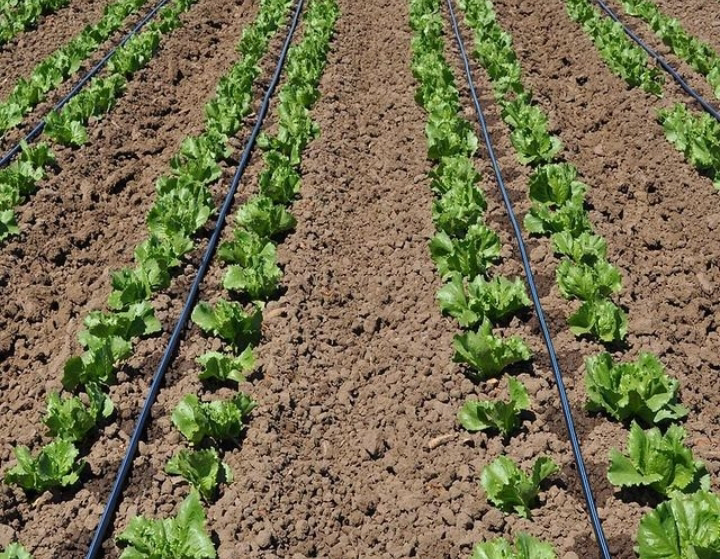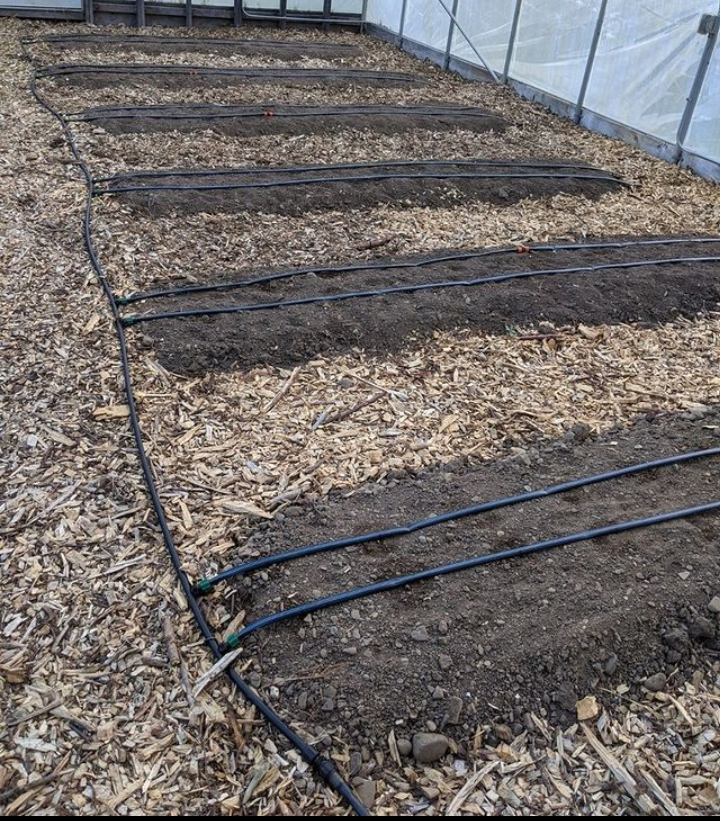Drip irrigation systems
Here are some key features and components of drip irrigation systems:
1. **Emitters**: Emitters are the heart of drip irrigation systems. They control the rate and volume of water released to the plants. Drip emitters can be pressure-compensating, meaning they deliver a consistent flow rate regardless of changes in water pressure. Common types of emitters include inline drippers, micro-sprinklers, and drip tapes.
2. **Tubing/Pipes**: Drip systems use polyethylene tubing or pipes to transport water from the water source to the emitters. The tubing comes in various diameters and thicknesses, and it is essential to choose the right size based on the water flow and distance requirements.
3. **Filters**: Filters are essential components in drip irrigation systems. They prevent particles, debris, and sediment from clogging the emitters. Filters can be screen filters, disc filters, or sand filters, depending on the level of filtration needed.
4. **Pressure Regulators**: Pressure regulators ensure that the water pressure within the system remains constant and within the optimal range for efficient operation. They protect the emitters from damage due to high water pressure.
5. **Backflow Preventers**: Backflow preventers are safety devices that prevent water from flowing backward into the main water supply. They protect the drinking water supply from potential contamination.
6. **Valves**: Valves control the flow of water through the system and allow for manual or automated control of the irrigation schedule. Solenoid valves are commonly used for automation, controlled by timers or sensors.
7. distribution system The distribution system refers to the layout of tubing and emitters throughout the irrigation area. It should be designed carefully to ensure even water distribution to all plants.
8. **Controllers/Timers**: Automation is a key feature of drip irrigation systems. Timers or controllers can be used to set specific watering schedules, ensuring consistent and efficient irrigation without the need for constant monitoring.
9. **End Caps and Flush Valves**: End caps are used to seal the ends of the tubing, while flush valves allow for easy cleaning and flushing of the system to prevent clogging.
Advantages of Drip Irrigation Systems:
- **Water Efficiency**: Drip irrigation is one of the most water-efficient methods, as it delivers water directly to the plant roots, minimizing wastage through evaporation and runoff.
- **Improved Plant Growth**: Precise and controlled watering leads to healthier plant growth and increased crop yields.
- **Weed Control**: Drip systems keep the soil surface dry, reducing weed growth compared to overhead watering methods.
- **Fertilizer Application**: Some drip systems allow for the integration of fertilizers, delivering nutrients directly to the root zone.
- **Suitable for Various Terrain**: Drip irrigation can be adapted to different landscape configurations, including hilly terrain and irregularly shaped fields.
- **Sustainable Farming**: Drip irrigation promotes sustainable water use, especially in regions facing water scarcity.
- **Reduced Labor**: Once set up and automated, drip systems save labor and time compared to manual watering methods.
Overall, drip irrigation systems offer numerous benefits and play a crucial role in modern agricultural practices and water-conserving gardening methods.






No comments:
Post a Comment